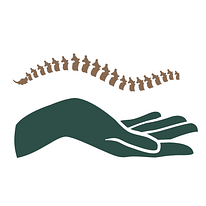Where there is motion, there is life. If part of the body becomes stuck, that restriction will carry throughout the rest of the body, spreading dysfunction that will lead to restricted motion and eventually pain.
Practitioners of Osteopathy have a deep understanding of anatomy and a highly refined sense of touch.
They can release restrictions in all the tissues in the body, including: lymph, organs, bones, blood vessels, muscles, nerves, tendons, and ligaments.
When every part of the body can move freely, the body is healthy.
Osteopathy is more than technique. It is equal parts philosophy and science, based on the following principles:
Structure and Function are Interrelated
From the smallest cell to the largest bone, all of anatomy is alive and in constant motion. Blood flows, lymph drains and cerebral spinal fluid fluctuates. The heart beats and the ribcage expands and contracts with every breath. Even the organs move as they function. Each and every part of the body has its own inherent rate of motion. When this motion becomes impaired, the tissues will not function as they were intended. As a result, symptoms develop, and disease may even arise. By releasing restrictions in the body, the state of health can return.
Osteopathy Recognizes the Interconnection of the Body

Many organ systems exist throughout the body. The circulatory and lymphatic systems system exchange fluids with every cell. The nervous system connects and integrates all functions. The connective tissue system is made of something called fascia, which is like a 3-dimensional spiderweb that runs throughout the body. Fascia surrounds every muscle, organ, nerve and blood vessel. Fascia becomes twisted and compressed by trauma, a concept that is extremely important in Osteopathy.
Consider someone with lower back pain. The problem is not necessarily just in the lumbar spine. There may also be restrictions in the sacrum, ilium and hips. The chest, shoulders or psoas may be tight and pulling the whole posture forward, causing the lower back to strain. Often, the kidneys have tension as well. It is highly unusual to see someone with this condition that has restrictions that reside solely in the back. Optimal treatment of lower back pain generally requires that the whole body be balanced, not just the back.
The Body Heals Itself
There is within each of us an inherent wisdom, an intelligence in every cell that keeps the body well. When a state of discord arises, this healing force acts to restore balance and harmony.
Osteopathy recognizes the body’s ability to heal, and recognizes that it is ultimately this force that does the healing.
How Is Osteopathy Different From Other Types of Bodywork?
The comparisons that follow are generalizations that may not reflect the actual practice of a given professional. Something to keep in mind when looking at the similarities and differences in all of these fields is that they are all first and foremost health practitioners. This means that their primary aim and focus is to promote health. Each practitioner has their own style that develops over time based on what they find to be effective.
There are chiropractors that favour gentle release over high velocity adjustments and utilize methodologies that are normally considered to be osteopathic. On the other hand, there are traditional osteopaths that do quite a bit of high velocity adjustments. There are massage therapists and physiotherapists that study osteopathic techniques as well, and in some cases they don’t even realize the techniques or perspective originated in osteopathy.
Traditional osteopaths also draw from these fields as well, particularly from the exercises offered in physiotherapy. It is not so much the name of what someone practices, it is how they practice. Different styles work well for different people. Find one that works for you.
How is Osteopathy Different From Massage?

A massage therapist (RMT) tends to apply techniques on the body as a whole, aiming to have a systemic effect with some time spent on specific areas of restriction.
Osteopathy, on the other hand, tends to focus entirely on the areas of restriction and traces them along their lines of functionality. Often, more time is spent in Osteopathy on the evaluation and motion tests to determine the primary restrictions of the body. Osteopathy usually feels more subtle than massage, since its goal is to listen to the tissues and supply precise amount of force necessary to release them.
How is Osteopathy Different From Chiropractic?

A Chiropractor usually spend 15 minutes with a client. A Traditional Osteopath usually has sessions are a minimum of 45 minutes, and are oftentimes over an hour. This gives sufficient them time to discover and release the multi-faceted restrictions found in the body.
How is Osteopathy Different From Physiotherapy?

With a physiotherapist, generally the exercises are the primary focus. With a Manual Osteopath, the hands-on component is the main focus.
What is the Difference Between an Osteopath and a Traditional Osteopath?
In North America an Osteopath is also a physician. By far, the vast majority of the training is the same as a regular physician. A very small percent of training hours are in Osteopathic Manipulative Techniques (OMT). Only about half utilize these techniques at all.
This was not the original intention of Osteopathy, which is why the term Traditional Osteopath is used to denote one whose focus is hands-on treatment. For this reason, the term Manual Osteopath is also used. It should be noted that there are osteopathic physicians who are very dedicated to osteopathic manual techniques. Once again, it is more about the practitioner than their title.
Osteopathy is only starting to become better known in Canada. It was originally developed in the United States and then made its way to Europe. In Europe, Osteopaths are more common than Chiropractors, but there is still a limited number of Osteopaths (Manual or otherwise) in British Columbia.–
